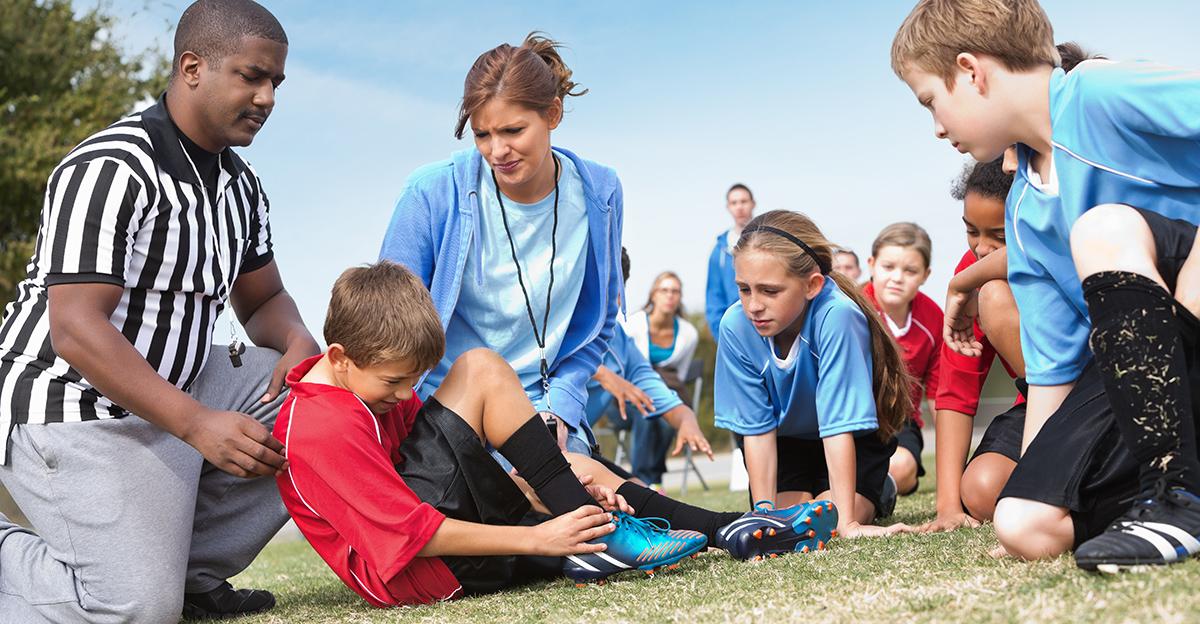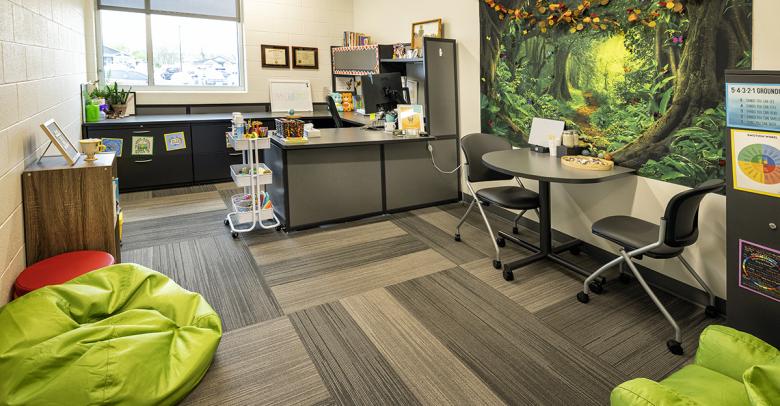Youth sports injuries are an unfortunate reality. More and more kids are playing youth sports, with some beginning as early as three years old! Athletic injuries range from sprains, strains, overuse, and overtraining to contusions, bone breaks, concussions, and other brain injuries.
While some sports have a higher risk of injuries, each sport presents the possibility. Since April is National Youth Sports Safety Month, it’s a great time to cover some basic safety tips for coaching and participation in youth sports.
Below are a few ways coaches (and parents) can reduce the risk of youth sports injuries for their young athletes.
Preseason
- Coaches should be trained in CPR and First Aid before each season and keep these certifications up-to-date.
- Create or purchase a First Aid Kit with all the basics, including several “quick ice” packs.
- Make a quick sheet that includes player names, emergency contact names and numbers, and pertinent medical information (allergies, medical conditions, etc.).
- Attend coaching clinics to learn methods of warming up, teaching skills, introducing strategy into gameplay, and avoiding injuries using various drills and mini-games.
- Most sports require children to have a medical exam before participating in any sport. This helps to rule out any medical conditions that may make it dangerous for them to be vigorously active. It also helps coaches by making them aware of conditions their athletes may have so they can be better prepared to adapt practices and meet the needs of all athletes.
Before Practices
- Check your First Aid Kit to ensure anything used since the last practice has been replenished.
- Fill 1-2 baggies with ice for cold therapy when strains or sprains occur. Keep them in a small cooler.
- Plan your warmups, drills, and gameplay to avoid injuries. Avoid focusing on one body part or drill too many days in a row, as overuse injuries are common in youth sports.
- Do a walk-around to check the field, court, etc., for safety hazards such as holes, cracks, or broken glass.
During Practices and Competitions
As players arrive, check the following clothing and accessories concerns:
- Dressed for play, with clothing and shoes appropriate for the sport and weather.
- Wearing sunscreen (if needed).
- Carrying a filled water bottle.
- Void of any jewelry.
- Wearing safety gear where appropriate. (helmet, pads, shin guards, goggles, etc.)
- Accompanied by an adult guardian (when appropriate).
Be sure all players get a warmup that begins slowly and increases with intensity (e.g., walk half of the perimeter, then jog, then side-slide, then run, changing locomotor skills at each corner of the field). Once blood flow has been increased to the major muscle groups used in the sport, have them go through the motions of activities within the sport from lower to higher intensity. For example, in soccer, passing to partners five paces away, then gradually increasing the distance.
Execute drills and games mindfully to ensure the following:
- Players don’t overuse certain muscle groups.
- Rules are enforced.
- Safety is kept in mind. (e.g., teach how to handle a bat in softball/baseball, teach how to use your head in soccer when appropriate, teach safe tackling in football, etc.)
- Contraindicated exercises are avoided.
- Supervision is thorough.
Allow for water and rest breaks when appropriate. When weather dictates, increase water breaks.
End practices and games with a good cool-down and closure, including:
- Stretching muscles used in activity. Hold stretches for 30-45 seconds to increase the range of motion, which helps reduce injuries over time.
- Discussion of strategies and skill cues practiced.
- Focus on the positive and what they did well.
- Provide information on the next practice, including where, when, and what specifically they will be working on.
During competitions, be sure to give players rest where appropriate. For example, in soccer, this gives the most highly-skilled players time to rest and recover and gives the lower-skilled players much-needed game time.
Have any special foods, drinks, and medications available for players with specific needs (e.g., diabetics, those with allergies to bee stings, asthmatics, etc.).
Between Seasons
Encourage your players to play other sports and activities! It may sound counterintuitive, but by mixing it up, kids gain many benefits, including:
- Fewer overuse injuries.
- Working with different coaches.
- Strategies and skills from one sport that can be adapted to others.
Don’t forget to attend coaching clinics to strengthen your coaching skills!
What Sports Athletes Know: Chewing Makes Good Brain Sense!
Be prepared for your next coaching season. Your athletes may not avoid injuries entirely, but follow these guidelines, and you will know you have done all you can to reduce youth sports injuries and keep your players healthy and ready for action.






Leave a Reply